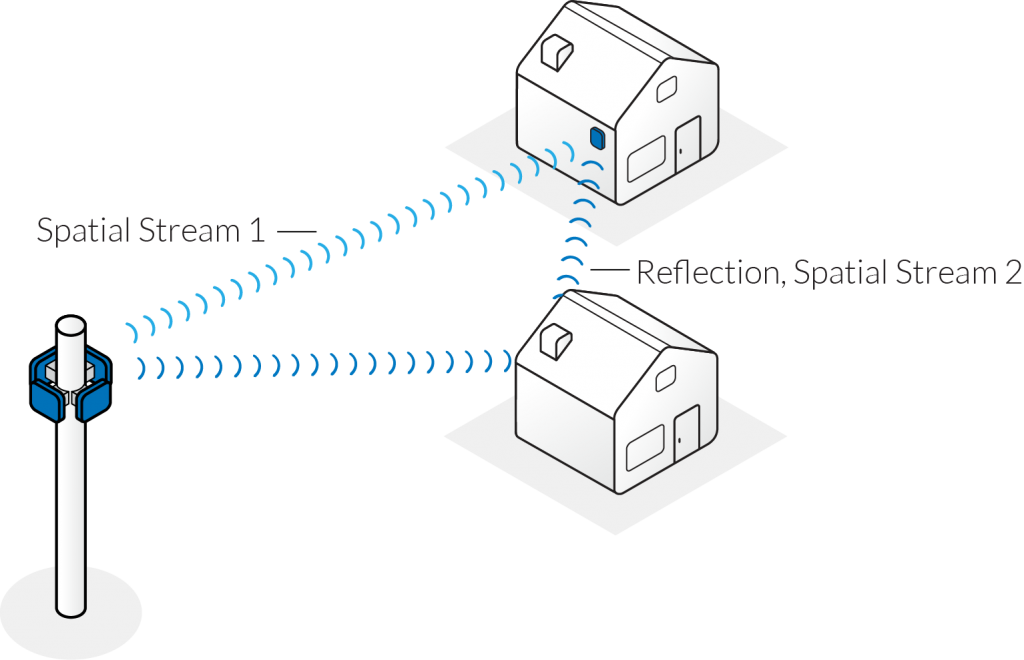This is the second of a series of blogs taking a closer look at what is required by next-generation fixed wireless platforms to deliver the outstanding results typical of this category. For a more comprehensive discussion of all aspects of ngFWA design, download the ngFWA Technology Primer.
A key part of ngFWA is the ability to support higher capacity links. This blog explains how MIMO and spatial multiplexing works and how it benefits a fixed-wireless application.
Multiple Inputs, Multiple Outputs (MIMO)
Used in many radio systems (including G1), MIMO is a technique which, as used in the industry, can refer to two different concepts. MIMO’s original definition is the use of different paths in the radio channel between base and remote to send more than one stream of information through the channel at the same time, thereby multiplying the channel capacity. Coding the streams on Tx allows them to be decoded separately on Rx. This is also referred to as spatial multiplexing and relies on the ability of the radios to create multiple streams (also called planes or layers) within the same frequency that can be distinguished from each other.

Spatial multiplexing commonly doubles channel capacity by taking advantage of vertical and horizontal antenna polarization to achieve sufficient channel diversity for at least two streams. Multiples of three or four can be achieved in channels with rich multipath diversity, which allows streams to arrive at different times and on different paths. Figure 1 above illustrates the common scenario of two transmit and receive streams. Figure 2 below illustrates how multipath in the environment creates additional unique spatial streams.
Massive MIMO architecture is a variation of simple MIMO that involves large numbers of independent radio chains at a base station (as many as 128) to increase spectral efficiency in mobile networks. A mobile remote, like a smartphone, is necessarily limited in terms of radio resources because of tight power, weight, size, and battery-life restrictions. Adding more radio resources at the base is the only practical option for mobile networks in an effort to increase overall performance.

Unfortunately, the massive real-time signal processing load associated with that large number of independent radios requires a trade-off — specifically more coarse modeling of the channel, which means beams and nulls are less precise and less optimized, which results in a suboptimal SINR. Because of this, spectral efficiency gains achieved in practice from massive MIMO have been limited and come at the expense of massive
computing costs and physical implementation complexity at the tower.
The massive MIMO approach relies on a powerful, complex base station and a simple, inexpensive remote and is common to many 3GPP/5G FWA implementations. While massive MIMO can yield real benefits, those benefits are targeted primarily at mobile wireless networks, not fixed networks. Repurposed 3GPP technology that works well for mobile applications is simply not sufficiently optimized for the task of next-generation FWA and its unique requirements.
Tarana’s G1 makes full use of MIMO and spatial multiplexing. In fact, it goes further with two advanced techniques unique to G1: distributed massive MIMO (DMM) and multi-user distributed massive MIMO (MU-DMM). We’ll cover each in our next blog in this series.
If you just can’t wait to learn more, check out our other blogs or some of our favorite customer links. Or reach out to us at info@taranawireless.com. We’d love to hear from you.


